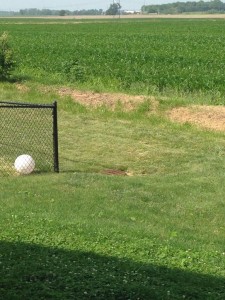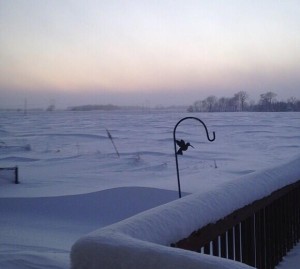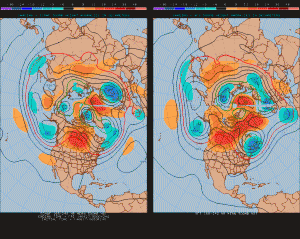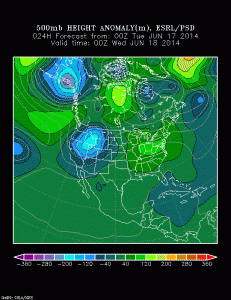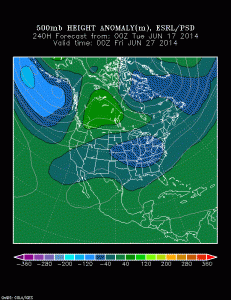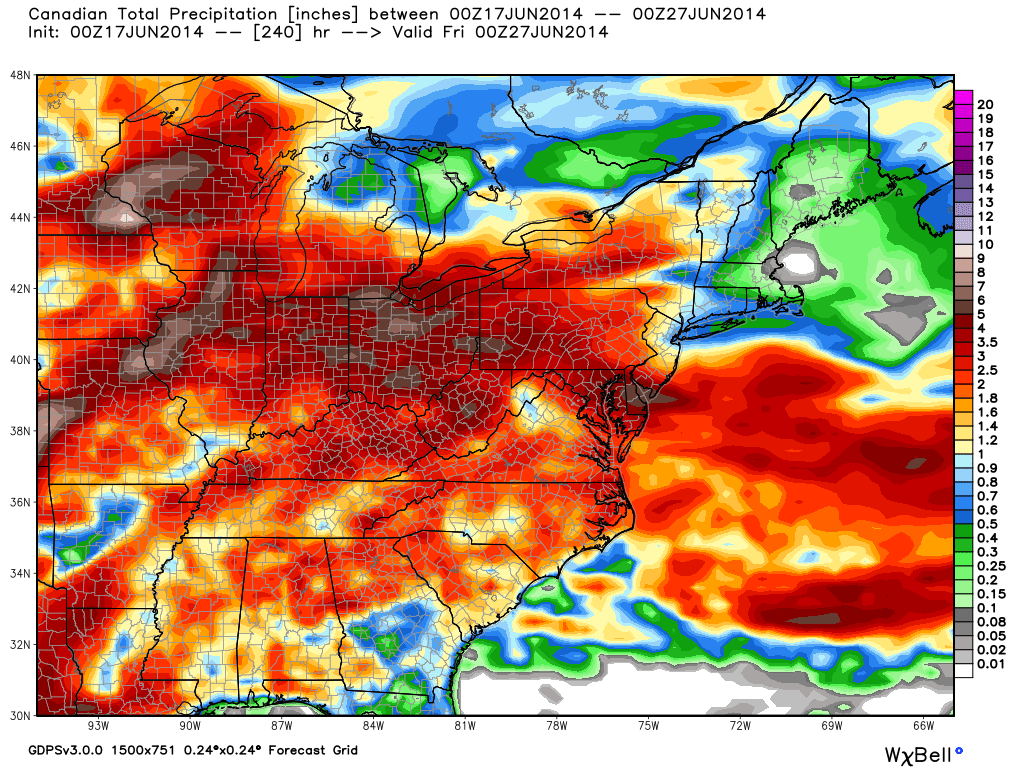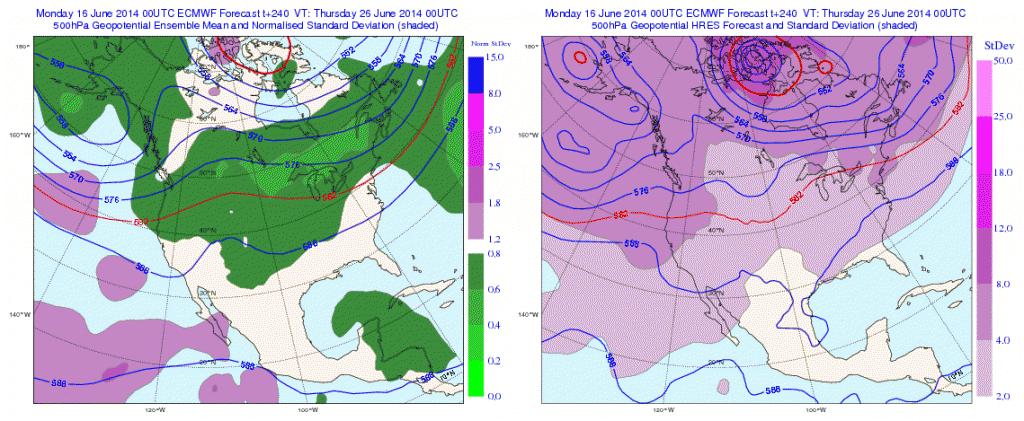Good morning! We’ll have your full, updated, 7-day forecast posted here later this evening! We wanted to discuss a few of the weather highlights as we move forward the next week, and beyond!
1. A cold front will move through tonight and early Friday. A shower or thunderstorm is possible as the front moves through, but won’t be a huge deal. Best rain/ storm chances appear to be across eastern portions of the region.
2. Temperatures and humidity values will be at levels simply as pleasant as you can ask for this time of year Friday and Saturday. Upper 60s to lower 70s during the afternoon and overnight lows in the upper 40s to lower 50s. Hint of fall before true summer even begins?! I’ll take it!
3. Heat and humidity builds next week with ridging, but we continue to think this is a transient type pattern and seeds are already being planted for cooler times once past June 20th. A couple days of 90 degree heat are possible mid to late next week. Furthermore, with all of the moisture in the ground, humidity levels will be oppressive. In other words, it turns hot and humid next week, but nothing too unusual for this time of year. Like so many other times it’s tried to get hot this year, it seems as if the seeds for cooler are already being seen.
Lets examine some of the mid to long range model data. We’ll start with a look at the 500 mb pattern off the GFS reforecast product from the Physical Science Division (PSD). Note the riding that develops next week, but also note the trough and associated cooler pattern showing up just after the 20th.
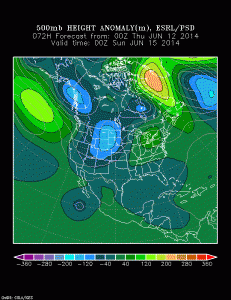
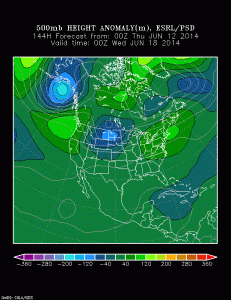
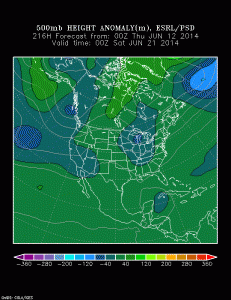
The GFS ensembles show the warmth (they still aren’t representing the warmth to the magnitude in which we’re going to see in my opinion, but you get the overall idea) next week and the coming cooler pattern around, and after, the 20th, relative to normal.
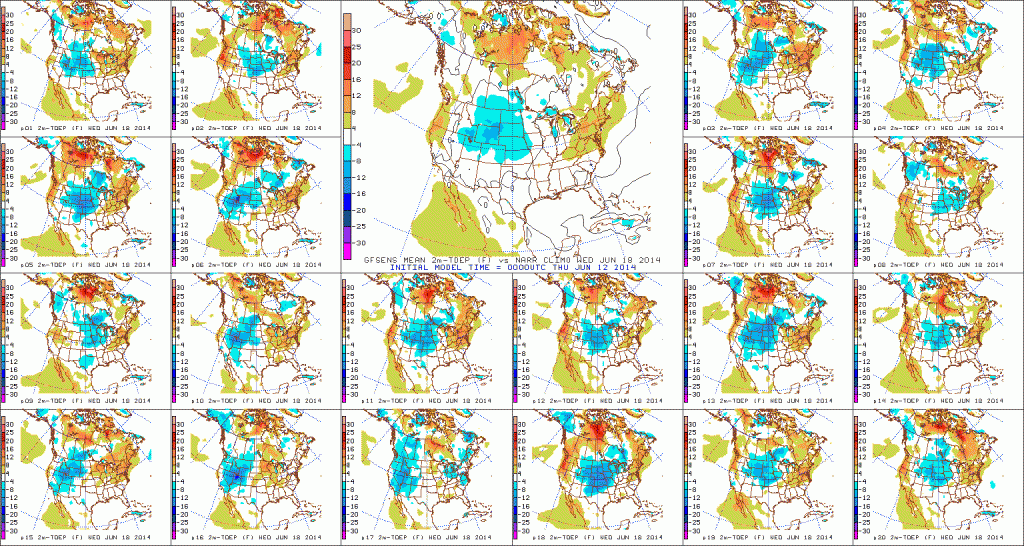
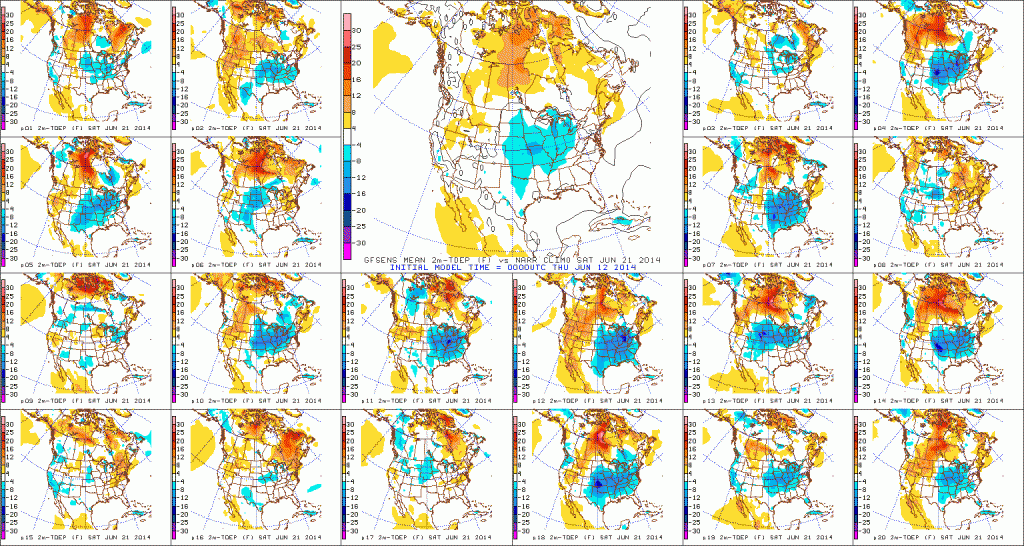
The Canadian NAEFS product is next, outlining the temperature anomalies 6/20-6/27. Note the warmer temperatures relative to normal (represented by the reds and orange hues) shifting off the east coast and the cooler temperatures (blue shades) developing and spreading east through the center of the country.
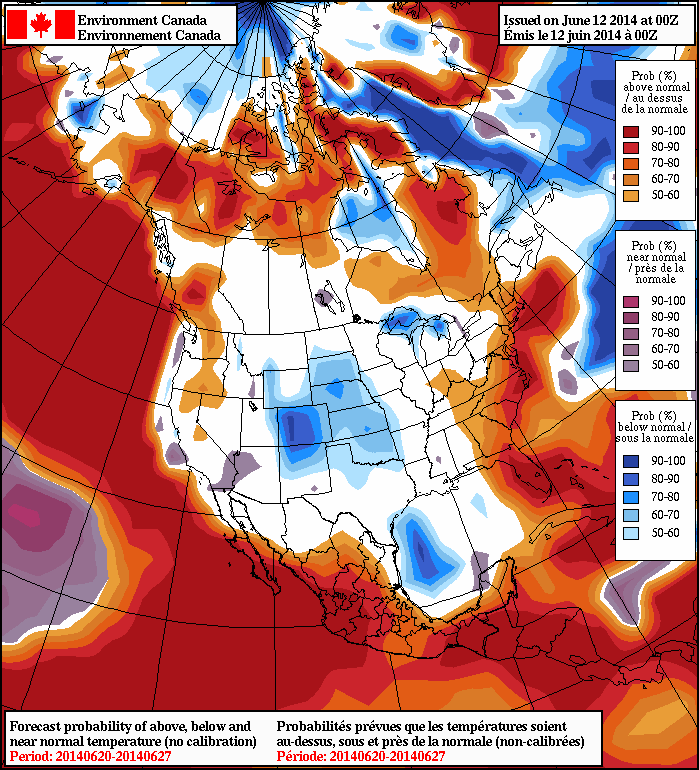
Finally, let’s look at the CFSv2 weeks 3-4 product. Again, we admit this model can be erratic at times, but we feel like it has a good handle on the coming pattern, as well, in this particular case. The greens show the cooler than average pattern anticipated as we go through the back 7-10 days of June.

As we close, it should also be noted that the overall active and wetter than normal pattern looks to continue as we put a wrap to the month of June. We’re already off to a near-record pace for June rainfall across central Indiana and while we’ll have some dry days, the overall theme remains an active and wet one in the weeks ahead.
Much more with your full 7-day forecast later this evening!

